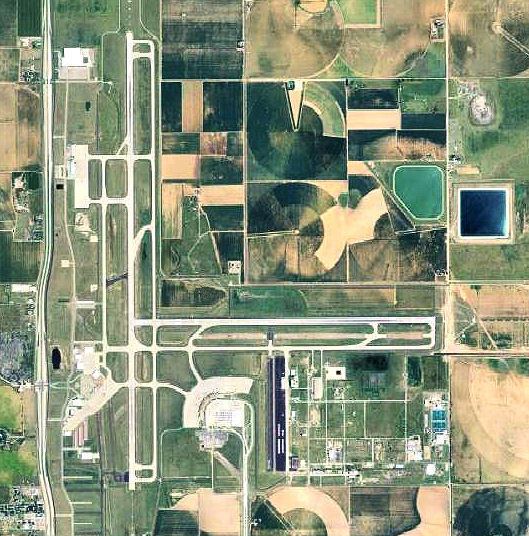Airport type Public Elevation 1,000 m | Owner City of Lubbock Elevation AMSL 3,282 ft / 1,000 m Code LBB Phone +1 806-775-2035 | |
 | ||
Location 5401 N. Martin Luther King Blvd., Lubbock, TX 79403 Address 5401 N Martin L King Blvd, Lubbock, TX 79403, USA | ||
Lubbock Preston Smith International Airport (IATA: LBB, ICAO: KLBB, FAA LID: LBB) is five miles north of Lubbock, in Lubbock County, Texas. Originally Lubbock International Airport, it was renamed in 2004 for former Texas governor Preston E. Smith, an alumnus of Texas Tech University.
Contents
The National Plan of Integrated Airport Systems for 2011–2015 classifies it as a primary commercial service airport. Federal Aviation Administration records say the airport had 562,241 passenger boardings (enplanements) in calendar year 2008, 534,818 in 2009 and 508,858 in 2010.
The airport is the 8th busiest airport in Texas. Lubbock International is first among the smaller Texas cities (behind both Dallas airports, both Houston airports, San Antonio, Austin, and El Paso). Wait times are minimal, about ten minutes from entering the airport to ticket-counters to gate. It is one of 42 airports around the world with CNN Airport Network. Lubbock Preston Smith International Airport is a hub for FedEx and UPS feeder planes to cities around the South Plains.
Lubbock preston smith international airport new exit doors
History
The airport opened in November 1937 as South Plains Airport. In 1942 the United States Army Air Forces indicated a need for the airport as a training airfield. After its requisition by the Air Force, it was assigned to the World War II Army Air Forces Flying Training Command, Gulf Coast Training Center (later Central Flying Training Command). The airport was renamed South Plains Army Airfield and a rapid period of construction was begun to convert the civil airport into a military training airfield.
Construction involved runways and airplane hangars, with three concrete runways, several taxiways and a large apron and a control tower. Several large hangars were also built. Buildings were utilitarian and quickly assembled. Most base buildings, not meant for long-term use, were of temporary or semi-permanent materials. Some hangars had steel frames and the occasional brick or tile brick building could be seen, but most support buildings had concrete foundations and frame construction clad in little more than plywood and tarpaper.
The base was activated on September 11, 1942 as the South Plains Flying School. The mission was ground and flying training of glider pilots. Glider training was performed by the 848th School Squadron (Special), with overall training being under the 64th Two-Engine Flying Training Group. Aircraft assigned were Douglas C-47 Skytrains and Waco CG-4A gliders. The CG-4A was the USAAF's primary glider, consisting of little more than a wooden and fabric shell, equipped with radio, wheels, and brakes. Glider pilots trained at South Plains flew these craft in combat during the Normandy Invasion, Operation Market-Garden, and also Operation Varsity, the airborne invasion of Germany.
By late 1944 Flying Training Command ended all glider instruction, and control of South Plains AAF was transferred to Air Service Command at Tinker Field, Oklahoma. Under Air Service Command, South Plains became a maintenance and supply depot for excess aircraft that could not be accommodated at Tinker. After the war ended, in 1946 and 1947, South Plains was used as a storage facility for excess aircraft prior to their reclamation.
Military use of South Plains ended on December 1, 1947 and it was returned to the local government for civil use.
Facilities
The airport covers 3,000 acres (1,200 ha) at an elevation of 3,282 feet (1,000 m). It has three runways: 17R/35L is 11,500 by 150 feet (3,505 by 46 m) concrete; 8/26 is 8,001 by 150 feet (2,439 by 46 m) concrete; 17L/35R is 2,891 by 75 feet (881 by 23 m) asphalt.
In 2011 the airport had 78,402 aircraft operations, average 214 per day: 48% general aviation, 29% air taxi, 12% airline, and 10% military. 134 aircraft were then based at this airport: 72% single-engine, 20% multi-engine, 4% jet, and 4% helicopter.
